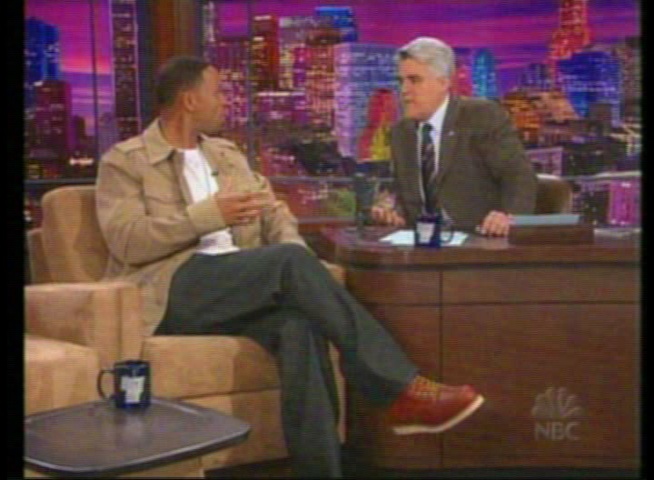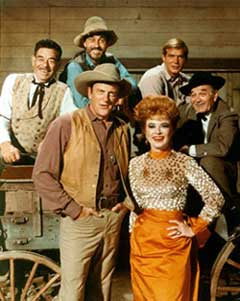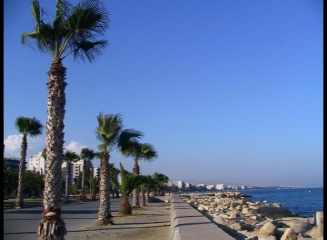Is there a filter for avisynth, virtualdub, or Pinnacle Studio 9 that makes home video look like old color tv shows from the 60s or 70s? Or is there an easy way to manually adjust brightness, contrast, etc.?
+ Reply to Thread
Results 1 to 21 of 21
-
-
Interesting question: How to reverse the last 40years of quality improvement.Originally Posted by Tyler2000
Let me think about it. -
virtualdub has many filters you can tweak. You can screw with the HSV and levels filters. MSU have damage filters, including noise. Try playing around with interlacing and deinterlacing filters. Mostly it's trial and error. It's all non-destructive, so go for it. It's the best way to learn.
Read my blog here.
-
I have the MSU old cinema virtualdub filter, but that only does things like lowering the framerate and adding noise. I think I need to adjust things like saturation and sharpness. Has anyone done anything like this before? I was hoping someone had a tutorial that would show me where to start. I guess my question is: What is it with old color tv shows that make them look like they do?
-
There is a RGB filter I use a lot for VDub. It gives control of the three primary colors where the HSV filter just changes the overall tint. If you do a Google search for 'VirtualDub filters' you can find it and quite a few others. My guess would be to drop saturation and add a little extra red or green. It depends how bad your TV was in the 60s & 70s.

-
In the 60's and 70's few color TV sets had a comb filter. That meant the color sets dropped luminance resolution to below 3MHz compared to monochrome sets that went out to 4.2MHz for luminance. So a typical color set back then lacked luminance detail. It wasn't until the late 80's that comb filters were widely used in the larger higher end color TV sets. Comb and notch filters extended luminance resolution to 4.2MHz and above, but caused their own picture artifacts.
On the chroma side, color TV sets limited I and Q (UV) to around 600MHz due to crosstalk problems in early sets. Color circuits were noisy. Heavy saturation produced noisy chroma. Studies showed people in sunny southern climate areas ran their sets with higher saturation than those in the cold drab north.
None of the normal filters mentioned above will produce the desired effect. You need to filter the components separately. For luminance, you need to limit bandwidth and add noise around the subcarrier frequency (3.58MHz for NTSC).
For U and V you would limit bandwidth and add some white wideband noise.
If you wanted to simulate reception problems (e.g. fade and multipath), then you could add luminance reflections and higher frequency noise. -
I think you misunderstood what I meant. I was born in the 1980s, so I really don't know what TV looked like in the 1970s. I just know what the TV shows from the 1970s look like on my 32" flat screen from a digital satellite broadcast. I'm talking about the color episodes of Gunsmoke, The Andy Griffith Show, or even the early movies in color, like the Music Man or Mary Poppins. They all have the same 'look' that I am wondering if it is possible to mimic with digital video. The color seems very bright and unnatural and the picture seems a little fuzzy.
-
Those are all 35mm film sources that have been "color corrected" and transferred to videotape.Originally Posted by Tyler2000
"The color seems very bright and unnatural and the picture seems a little fuzzy"
These may be old or cheaply done transfers*. It could also be an artifact of DBS satellite. Can you point to a specific broadcast so I can observe on my system? What channel carries Gunsmoke?
*Usually major restoration is done prior to DVD mastering for these old shows. Do you see a difference on-air versus a DVD release of these shows? -
Thanks for the pic, canadateck. That is what I am talking about. It doesn't matter if a show is on TV Land from a satellite broadcast, from an over-the-air broadcast, or a dvd. Tv shows and films from this era all look the same.
edtv said they are 35mm film that have been 'color corrected'. What does that mean? You don't mean they 'colorized' black and white film for each episode? -
No, 35mm film deteriorates quickly and needs heavy restoration after a few years. The color dyes fade at different rates. It takes major $$$ to restore these films to the video standard of the day. By the mid 80's major films were starting to be restored and backed up to 4:2:2 D1. TV shows were last in line and had deteriorated more before being restored for DVD in starting in the late 90's.Originally Posted by Tyler2000
But also, Ted Turner bought the MGM (and other) archives and did colorize many of the black and whites.
There are three kinds of "film look"
1. The qualities of fresh 35mm processing.
2. The look of heavily aged and cheaply restored old film (e.g. Gunsmoke)
3. The look of heavily aged and expensively restored old film (e.g. Hitchcock's Vertigo) -
To answer the question"


Just play with the Filters in avisynth, virtualdub, My FAV " Sony Vegas" and I'm sure you will get (CLOSE) to the look you want, not exactly like that movie but enough to be happy.
-
OK, I want film look #2 with minidv ntsc video.
I guess I'll just play around with it to see what happens. -
I made a few attempts in Vegas last night and couldn't get there. I decided that it boiled down to "film look" (see google) or TV set limitations in the 60s-70s.Originally Posted by canadateck
"film look" in this case means aged restored film, harsh lighting and 50's color film grain.
Looking at Encore Westerns channel, it looks like all lighing was done from ~10,000 Watt key lights. Contrast is heavy and shadows deep. -
You know you are getting old when Miss Kitty starts to look "hot"Originally Posted by canadateck
-
edDV pretty much said everything I wanted to say earlier today..
but couldn't, at the ime - work.
The bottom line with the "old 70's " look is the film and equipment
of that ERA. It was a great ERA, back then. Most everything was
taped (probably Beta) But, I was sould say mostly, this look is
not from restoration or touchups or what-have you's.., but rather
from the film stock of that ERA. Everything pretty much goes
through some form of standard transfer. But, I'm sure various
entities twist things around a *little*
.
Look at Start Trek OT series. This has the 70's look also.
The transfer was probably done, either better, or on a different
transfer setup system, but the look is still there, "that 70's" look.
.
It's the film stock (and equipment) of that ERA.
IMO, those such equipment and things were not poor or prehistoric.
They were the times in that ERA.
If you were to record with *todays* ERA of equipment and things, you
would experience quality or "look" of todays' ERA. The only way
you can get that look of the 70's is to either go back in time, or
find the old equipment of those days, and use it. Unlikely though.
*this* is the reason for that look.
If you want that look, and in todays shows, it's gonna be hard to
produce w/out a skillful and cunning knowledge, and feel for working
with your hands and instinct, etc. plus the software to back it up
.
I think there maybe a few software outfits that already do this.
You just have to use google, ad edDV suggested. Type in something
like "video AND 70's look" or variation. Use google's advance search
for this. I would assume that you'll find most filters or software
for MAC machines during your search. I usually find them this way.
-vhelp 3383 -
This was my best, though unsatisfactory, attempt to create a 70's TV display.
Luminance Blur
Luminance high frequency noise
Chroma saturation + noise

Similar Threads
-
best DVD recorder filter & ATI AIW filter
By VCRcomp in forum RestorationReplies: 1Last Post: 27th Jan 2011, 17:27 -
Sophisticated filter for fixing VHS source color bleeding: Done already?
By Mini-Me in forum RestorationReplies: 0Last Post: 24th Nov 2010, 12:05 -
Any recommended settings for TMPGencXpress color filter?
By Anonymous5394 in forum Newbie / General discussionsReplies: 0Last Post: 27th Mar 2010, 11:29 -
8mm film and the msu old color restoration filter
By buckethead in forum RestorationReplies: 14Last Post: 22nd Jul 2009, 23:06 -
Camcorder Color Denoise Filter for VirtualDub
By Soopafresh in forum Camcorders (DV/HDV/AVCHD/HD)Replies: 0Last Post: 17th Mar 2008, 13:30




 Quote
Quote


